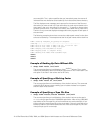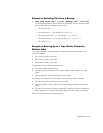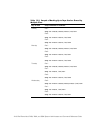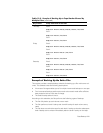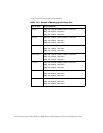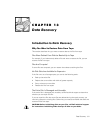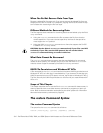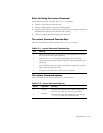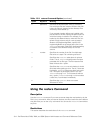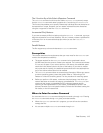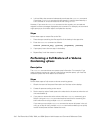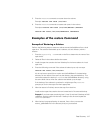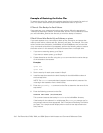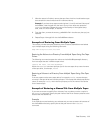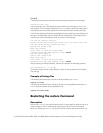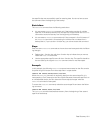
13-4 Dell PowerVault 720N, 740N, and 760N System Administrator and Command Reference Guide
8VLQJWKHUHVWRUH&RPPDQG
'HVFULSWLRQ
Use the
restore
command if you want to recover data that was backed up by the
filers
dump
command. After you recover the data, the files contain the same data as
they did when you ran the
dump
command. You can use the
restore
command at
any time.
5HVWULFWLRQV
This section describes the restrictions of the
restore
command.
D
pathname
Specifies the absolute path name of a directory
into which the files are restored. Without the path
name, the files are restored to the directory from
which they were backed up.
If you created a backup before you installed multi-
ple volumes on the filer, specify the path name into
which the backup is restored. For example, if you
backed up the
/home directory when the filer con-
tained a single volume and you want to restore
/home to /vol/engineering/home, specify /vol/
engineering/home
as the target path name in the
restore
command. Otherwise, the home backup
is restored to the
/home directory of the root
volume.
s
number
Specifies the number of the file if multiple tape
files exist on a tape. File numbering starts at 1.
v
Specifies that
restore
takes place in verbose
mode. That is,
restore
displays each file name
preceded with its file type. The filer restores files
faster without the
v
option.
y
Specifies that
restore
not ask whether it should
terminate when getting an error. That is, if there are
bad blocks,
restore
skips over them and contin-
ues. This option is particularly useful if you use
restore
through
rsh
. This is because without
the
y
option, if
restore
through
rsh
encounters
a read error, it terminates immediately.
A
Specifies that
restore
does not restore
Windows NT ACLs.
7DEOHUHVWRUH&RPPDQG2SWLRQV
FRQWLQXHG
2SWLRQ $UJXPHQW 0HDQLQJ



